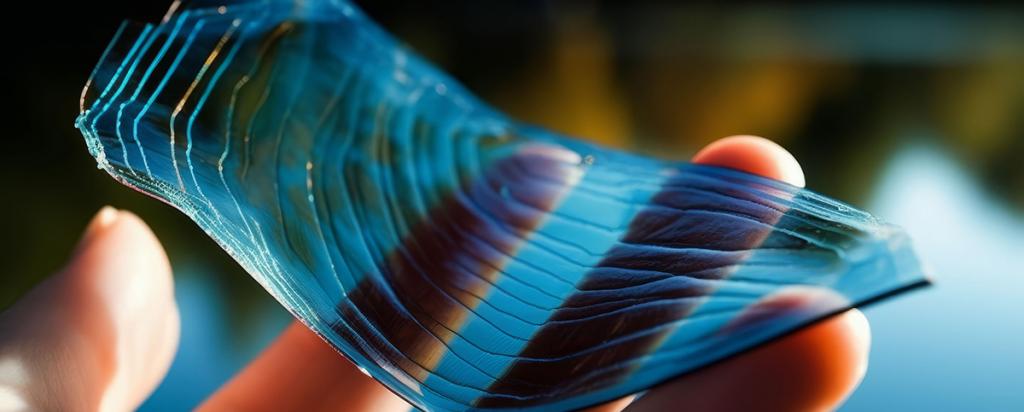

Published on the 14th July 2017 by ANSTO Staff
International researchers led by Assoc Prof Chris McNeill’s group at Monash University have used an X-ray scattering at the Australian Synchrotron to understand how microstructure contributes to the performance of an organic solar cell made with a semiconducting polymer and fullerene thin film.
The investigators evaluated the performance, microstructure and photophysics of dual stack bulk heterojunction (BH) solar cells made with a low bandgap polymer and fullerene thin film in a study published in Advanced Energy Materials.
The research relied on a range of techniques including X-ray scattering, photoluminescence spectroscopy, ultrafast transient absorption spectroscopy and transient photovoltage measurements, to gain a better understanding of how the choice of fullerene acceptor influences microstructure, photophysics and contribute to device performance.
A bulk heterojunction device is fabricated by coating a blend of two organic semiconductors between two electrodes. Thin films, which are usually less than 100 nanometres thick, offer production advantages for solar cells.
The close blending of materials is required for high performance because photo-generated excitons travel less than 10 nanometres before recombining, with photocurrent generation proceeding through via the dissociation of excitons a material interfaces. Efficient devices therefore require the blend to be optimally structured on the nanoscale.

2-dimensional X-ray scattering patterns of (a) PC61BM, (b) PC71BM and (c) ICBA. (d) line profiles integrated from 2D scattering patterns and (d) fitted parameters.
Advanced characterisation techniques are used to understand how microstructure, or morphology, contributes to power conversion efficiency.
Fullerenes act as electron acceptors in a device. Three novel compounds, PC71BM, PC61BM and ICBA were blended with a low band gap polymer, PBDTTT-EFT for the study.
The highest efficiency (9.4%) was found in the blend using the acceptor PC71BM, which also had the highest visible light absorption.
Prof Chris McNeill and collaborators used Synchrotron-based grazing incidence wide angle X-ray scattering (GIWAXS) to determine the molecular orientation of the polymer with respect to the substrate in the bulk of the thin film.
The GIWAXS measurements provided information about the orientation of polymer crystallites in the bulk, with these crystallites needing to be properly aligned in order for charges to travel through the material more easily.
Resonant soft X-ray scattering was also carried out by co-author Dr Lars Thomsen at the Advanced Light Source at Lawrence Berkley National Laboratory in the US to clarify the structure and purity of domains.
Thomsen, a member the soft x-ray spectroscopy beamline team at the Synchrotron, has undertaken previous collaborations with the McNeill Group on organic electronics.
R-SoXS indicated that one of the blends, PBDTTT-EFT:PC71BM exhibited the largest domain size and highest domain purity, which was thought to facilitate charge separation and transport.
The scattering profiles also provided an indication of the roughness of the interfaces between the domains in the three compounds.
The R-SoXS and other methods suggested that the lower power conversion efficiency of the ICBA compound might be explained by rougher domain interfaces, lower crystallinity and smaller domain size.
Contributors include Dr Wenchao Huang and colleagues at Monash University, Dr Eliot Gann (now at Brookhaven National Lab), researchers from the University of California Los Angeles, the Indian Institute of Technology Bombay and Victoria University of Wellington.